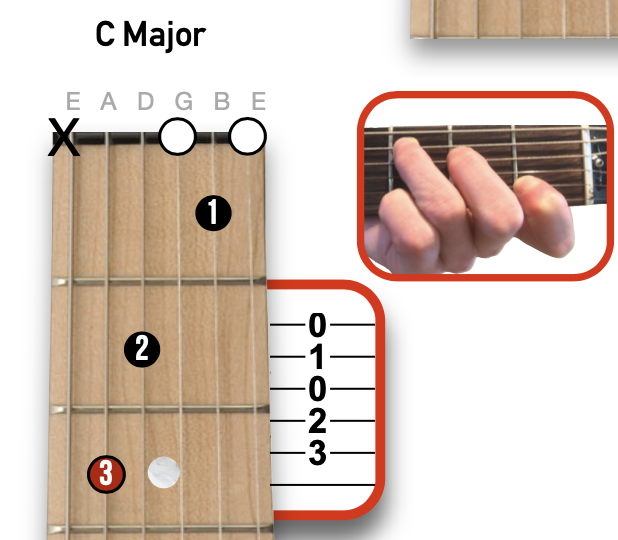
C chord
How to play the C Chord on Guitar
The C chord can be played in different positions and variations on the guitar. Here are five ways to play a C chord:
Learn to Play the C Chord on Guitar
-
Open C Chord:
- Place your ring finger on the 3rd fret of the A string.
- Place your middle finger on the 2nd fret of the D string.
- Leave the G string open.
- Press down the 1st fret of the B string with your index finger.
- Leave the high E string open.
- This is the basic open C chord as explained in the previous response.
-
C Barre Chord (Root on the 3rd Fret):
- Barre the 3rd fret with your index finger, covering all six strings.
- Place your ring finger on the 5th fret of the A string.
- Place your pinky on the 5th fret of the D string.
- Place your middle finger on the 4th fret of the B string.
- Leave the G and high E strings open.
- This is a movable C barre chord that allows you to play the C chord in different positions by sliding the barre up and down the neck.
-
C Power Chord:
- Place your index finger on the 3rd fret of the A string.
- Place your ring finger on the 5th fret of the D string.
- Optionally, you can add your pinky to the 5th fret of the G string for a fuller sound.
- Mute the other strings.
- This is a simplified version of the C chord, often used in rock and power chord progressions.
-
Cadd9 Chord:
- Place your ring finger on the 3rd fret of the A string.
- Place your middle finger on the 2nd fret of the D string.
- Leave the G string open.
- Press down the 3rd fret of the B string with your pinky.
- Leave the high E string open.
- The Cadd9 chord adds a ninth interval to the C major chord, creating a slightly different and often brighter sound.
-
C Barre Chord (Root on the 8th Fret):
- Barre the 8th fret with your index finger.
- Place your ring finger on the 10th fret of the A string.
- Place your pinky on the 10th fret of the D string.
- Place your middle finger on the 9th fret of the B string.
- Leave the G and high E strings open.
- Another movable C barre chord with the root on the 8th fret.
These variations allow you to play the C chord in different contexts, and they can be used based on the musical style, progression, or the sound you’re aiming for in your playing.







